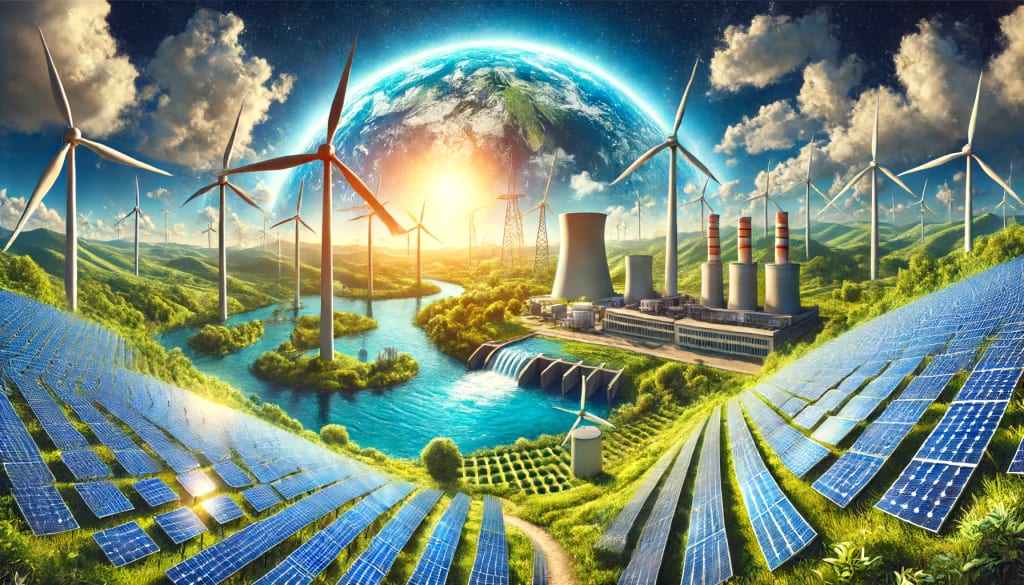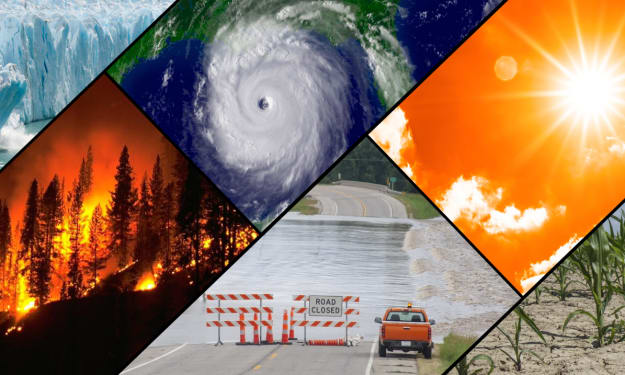The Rise of Renewable Energy: Transforming the Global Energy Landscape
Harnessing the Power of Tomorrow: The Rise and Impact of Renewable Energy

In the past decade, renewable energy has transitioned from a niche sector to a cornerstone of the global energy landscape. Driven by advancements in technology, falling costs, and growing environmental concerns, renewable energy sources such as solar, wind, and hydropower are reshaping the way we generate and consume electricity. This article delves into the key factors behind the rise of renewable energy and its implications for the future.
Technological Advancements
One of the primary drivers behind the surge in renewable energy is the rapid advancement in technology. Innovations in solar panel efficiency, wind turbine design, and energy storage have significantly enhanced the performance and cost-effectiveness of renewable energy systems.
Solar Power: Over the years, solar photovoltaic (PV) technology has seen remarkable improvements. Modern solar panels are not only more efficient at converting sunlight into electricity but also more affordable. The development of thin-film solar cells and perovskite solar cells promises even greater efficiency and lower costs in the future.
Wind Energy: Wind turbine technology has also made significant strides. Today's turbines are larger, more efficient, and capable of generating more power than ever before. Offshore wind farms, which harness the stronger and more consistent winds found at sea, are becoming increasingly prevalent, further boosting the capacity of wind energy.
Energy Storage: Advances in battery technology, particularly in lithium-ion batteries, have made energy storage more viable. This is crucial for addressing the intermittency of renewable energy sources like solar and wind. Energy storage systems can store excess power generated during peak production times and release it when demand is high or production is low, ensuring a reliable power supply.
Declining Costs
The cost of renewable energy has plummeted in recent years, making it increasingly competitive with traditional fossil fuels. According to the International Renewable Energy Agency (IRENA), the cost of electricity from solar PV fell by 82% between 2010 and 2019, while onshore wind costs dropped by 40% over the same period.
Several factors contribute to this decline in costs:
Economies of Scale: As the production of renewable energy technologies has scaled up, manufacturers have achieved significant cost reductions.
Improved Manufacturing Processes: Advances in manufacturing techniques and materials have increased the efficiency and reduced the cost of renewable energy components.
Competitive Bidding: The rise of competitive auctions for renewable energy projects has driven down prices as developers vie to offer the lowest bids.
Environmental and Economic Benefits
Renewable energy offers numerous environmental and economic benefits, making it an attractive option for governments, businesses, and consumers.
Environmental Impact: Renewable energy sources produce little to no greenhouse gas emissions, reducing the carbon footprint and helping combat climate change. Unlike fossil fuels, renewables do not emit pollutants that contribute to air and water pollution, making them a cleaner alternative.
Energy Security: By diversifying the energy mix and reducing reliance on imported fossil fuels, renewable energy enhances energy security. Countries can harness their domestic renewable resources, reducing vulnerability to geopolitical tensions and price fluctuations in the global oil and gas markets.
Job Creation: The renewable energy sector is a significant source of employment. According to IRENA, the sector employed over 11 million people globally in 2018. Jobs in renewable energy span manufacturing, installation, maintenance, and research and development, offering opportunities for skilled workers in various fields.
Policy and Investment
Government policies and investment play a crucial role in the growth of renewable energy. Many countries have implemented supportive policies, such as subsidies, tax incentives, and renewable energy targets, to encourage the adoption of renewables.
Subsidies and Incentives: Financial incentives, such as feed-in tariffs, tax credits, and grants, have been instrumental in lowering the cost of renewable energy projects and making them more attractive to investors.
Renewable Energy Targets: Setting ambitious renewable energy targets sends a strong signal to the market and drives investment in the sector. For example, the European Union has set a target to achieve 32% of its energy from renewable sources by 2030, while countries like Germany and Denmark have set even higher targets.
Investment in Research and Development: Public and private investment in research and development is critical for driving innovation in renewable energy technologies. By funding research projects and pilot programs, governments and companies can accelerate the development and deployment of cutting-edge technologies.
The Future of Renewable Energy
The future of renewable energy looks promising, with continued advancements and increased adoption expected to drive further growth. Several trends are likely to shape the future of the sector:
Integration with Smart Grids: The development of smart grids, which use digital technology to manage and optimize the distribution of electricity, will enhance the integration of renewable energy into the grid. Smart grids can balance supply and demand in real-time, accommodating the variable nature of renewable energy sources.
Hybrid Renewable Energy Systems: Combining different renewable energy sources, such as solar and wind, with energy storage systems can provide a more stable and reliable power supply. Hybrid systems can leverage the strengths of each energy source, ensuring consistent electricity generation.
Decentralized Energy Generation: The rise of decentralized energy generation, where power is produced closer to where it is consumed, will reduce transmission losses and improve energy efficiency. Distributed renewable energy systems, such as rooftop solar panels and small-scale wind turbines, empower consumers to generate their own electricity and reduce their dependence on the grid.
Electrification of Transport and Industry: As the electrification of transport and industry accelerates, the demand for renewable energy will increase. Electric vehicles (EVs) and electric industrial processes require substantial amounts of electricity, providing a significant market for renewable energy.
Conclusion
Renewable energy is transforming the global energy landscape, offering a cleaner, more sustainable alternative to fossil fuels. Technological advancements, declining costs, and supportive policies have driven the growth of renewables, bringing numerous environmental and economic benefits. As we look to the future, continued innovation and investment in renewable energy will be essential for addressing climate change and ensuring a sustainable energy future for generations to come.
About the Creator
Laura Magdalena
Welcome! I write about a little bit of everything, but I'm passionate about exploring technology, with a special focus on AI. Dive into my insights to discover how these fields are transforming our world and shaping the future!
Enjoyed the story? Support the Creator.
Subscribe for free to receive all their stories in your feed. You could also pledge your support or give them a one-off tip, letting them know you appreciate their work.






Comments
There are no comments for this story
Be the first to respond and start the conversation.